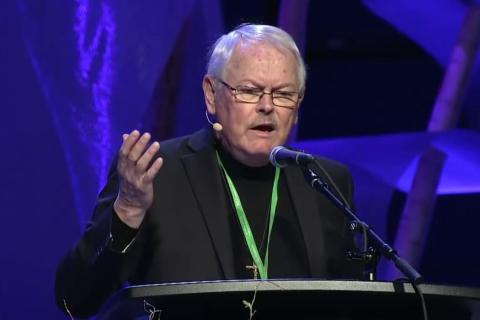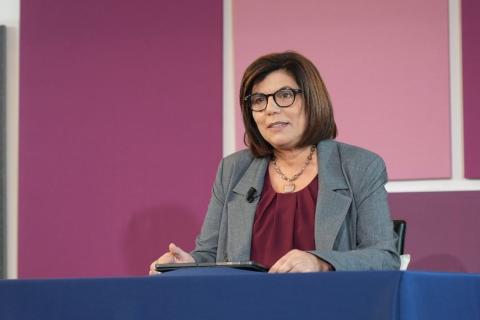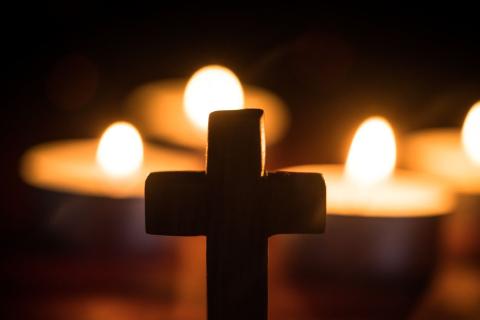
An artistic moment during the "Called to Hope" conference at Mariapolis Centre, Castel Gandolfo, Italy
The year 2025 marks the 1700th anniversary of the Council of Nicaea, where the creed most Christian churches still acknowledge was formulated, as well as the 60th anniversary of mutual excommunications being lifted by the Church of Rome and the Church of Constantinople. And by happy coincidence, this year all Christian churches will celebrate Easter on the same date—April 20.
So not it was not by coincidence that Centro Uno, the Focolare Movement’s office for ecumenical and interreligious dialogue, chose 2025 to hold “Called to Hope: Key Players of Dialogue.” Sandra Ferreira, coordinator of Centro Uno, describes their hope: “We want to learn from the spiritual riches of others. ‘Ephphatha’—‘be opened,’ said Jesus to a deaf-mute! That is what he wants from us: that we open ourselves to him and to each other. How? By raising the thermometer of mutual love!”
I was one of a dozen participants from North America at Called to Hope. There, we put in common our own spiritual riches and raised the thermometer of our love with other “key players” from forty nations, representing twenty Christian churches. From March 26 to 29 we shared the possibility of authentic Christian unity through experience, fellowship, and prayer.
Focolare member Callan Slipper, an Anglican priest, and I have collaborated as translators and editors for many years. He described our goal at Called to Hope: “Ecumenism, by repairing relationships, allows the Church to be itself. It is a great rose window, but our divisions have shattered it into a thousand pieces. Each piece is beautiful in itself, but together they lack the splendor of the whole. We need the beauty of this rose window, through which the light of Christ, the light of the world, radiates.”
In response to Rev. Slipper, the Focolare Movement’s co-president, Jesús Morán Cepedano, urged that we “move from union to unity. Union is not enough, because the parts remain juxtaposed…. In unity, on the other hand, there is interconnection. Unity is a Trinitarian relationship in which people interpenetrate.”
Such “interpenetration” and restoration of relationships can begin at the grassroots level.
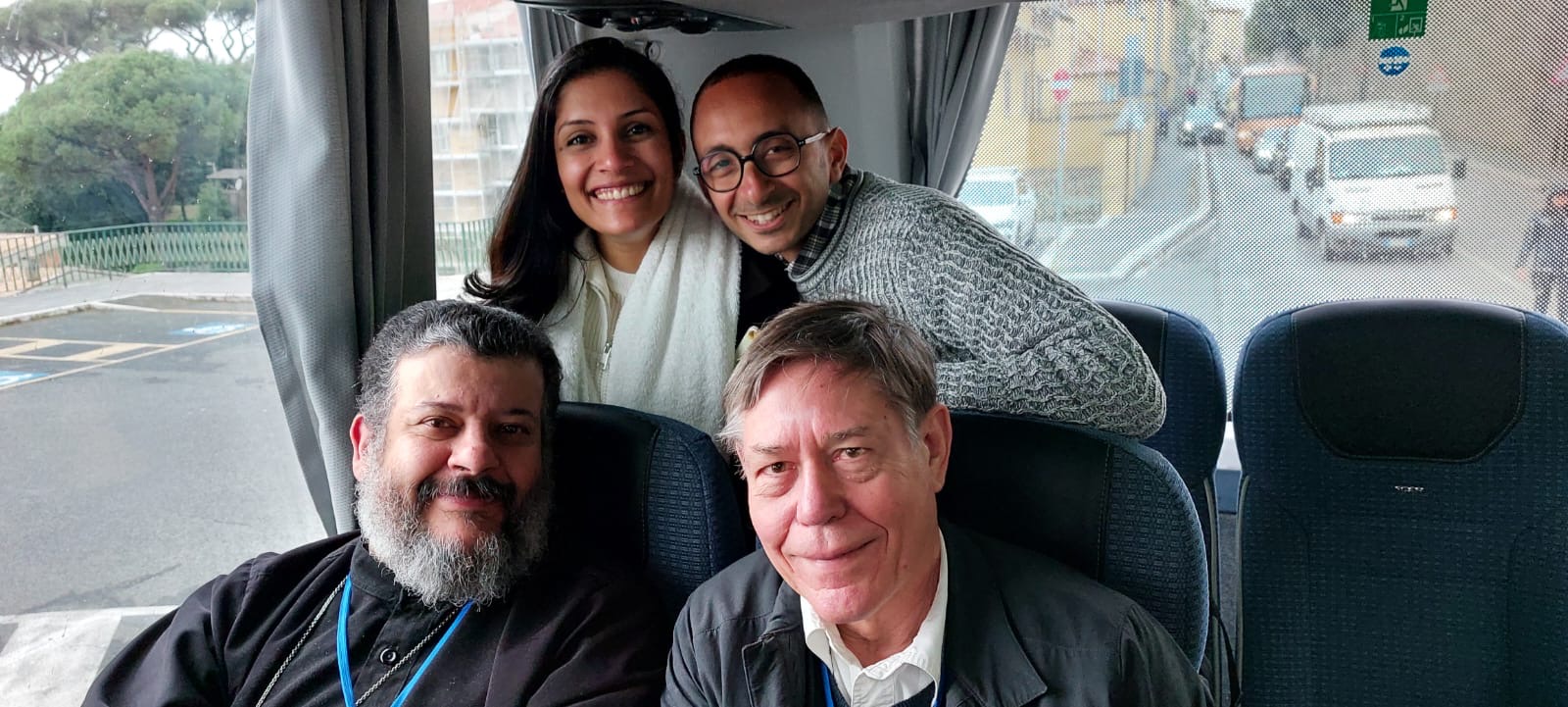
Tom Masters with Fr. Gregory Saroufeem of the Coptic Orthodox Church in New York (to his right)
I first met one of the North American participants, Professor Karen Petersen Finch, from the Presbyterian College, Montreal, while editing her book, Grassroots Ecumenism: The Way of Local Christian Reunion. At Called to Hope she presented her experience of the “grassroots ecumenism” between Holy Family Roman Catholic parish and First Presbyterian Church in Clarkston, Washington. In her plenary presentation, she set the tone for our days together: “Shared witness, service, and justice are wonderful, but unity is not solid unless we are working toward agreement in doctrine, no matter how difficult the conversation or how distant doctrinal unity might seem.” She explained, “Many assume today that doctrine divides. But I have seen the opposite of division. I have witnessed increases in reception, hope, emotional participation, and legitimation … a wholeness under the brokenness.” After the conference, she shared that she was going home with “a strong feeling of no longer being alone in my vision and of having a community I respect to check in with when I am feeling hopeless or uncertain.”
Scott Brill leads The Initiative, an ecumenical community on whose leadership council I serve. Covenant members of The Initiative, who come from mainline Protestant, Roman Catholic, Orthodox, and nondenominational Evangelical churches, seek “to walk in unity with Christ and his followers.” Called to Hope left Scott feeling “deeply renewed in the hope of my calling to unity…. I was especially encouraged and inspired by all the stories from around the world, and from the deep connections of love and fellowship that I experienced. I come back to my own little piece of the ‘vineyard’ eager to labor and to pray for the fruit of ‘love greater than division.’”
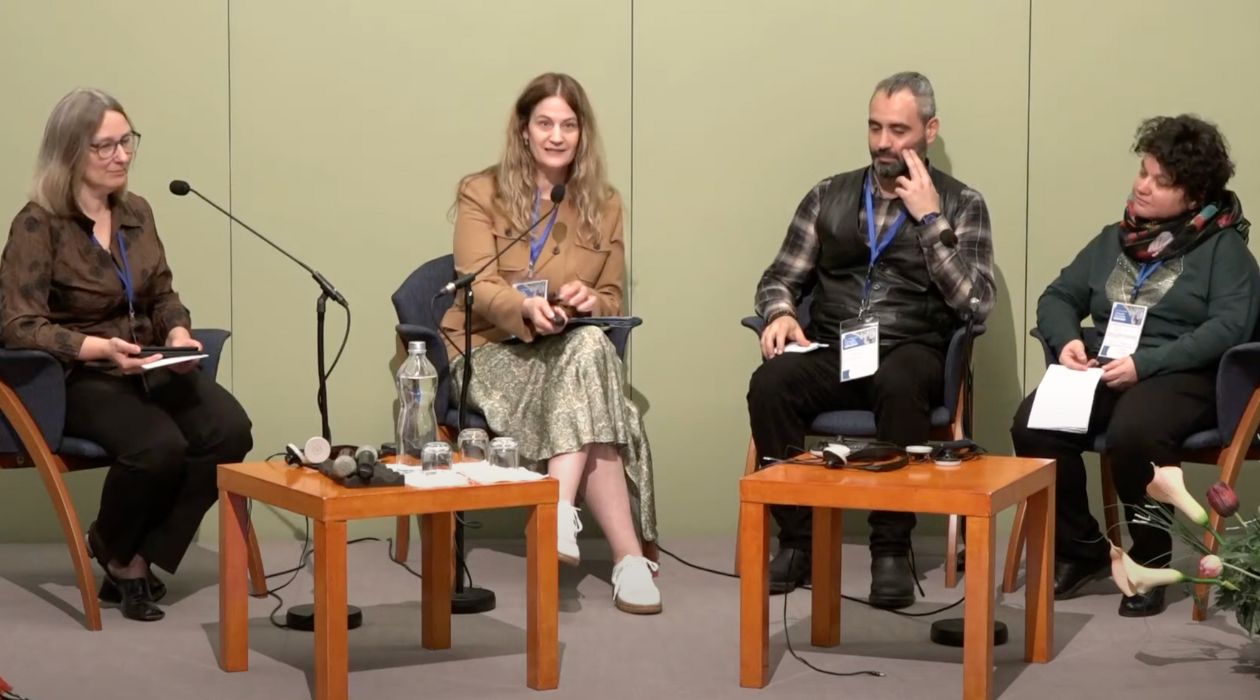
Rev. Dr. Karen Petersen Finch (second from the left) during a presentation at "Called to Hope" conference
For the last thirty years, my friend Nate Bacon, a Roman Catholic married deacon, has served in San Francisco and in Quetzaltenango, Guatemala as a missionary for InnerCHANGE, an ecumenical Christian order that serves the poor. The conference gave him “a fresh appreciation for the promise (1,700 years later) of the Nicene Creed in helping to foster unity in Christ across differences,” and “an even firmer conviction that when we seek to become the answer to Jesus’ prayer in John 17, we allow the Spirit to move in and through us for the sake of the justice and peace for which the world longs.”
Elizabeth Newman, a professor of theology and ethics at Duke University, serves as chair of the Baptist World Alliance Commission on Baptist Doctrine and Christian Unity and participated last year as an invited guest at the third round of the Synod on Synodality. At Called to Hope she told me she found “new friendships, much gratitude for my participation, and a real concern for the embodiment of ‘grassroots’ ecumenism.” Although she has had deep experience in official ecumenical dialogues concerning Christian unity, this conference left her with “a fuller sense of ways that ‘seeds of hope’ and unity can grow at the local level.” It confirmed her “focus on unity, a passion that has long been part of my own journey and vocation.”
During the second day of the conference, we retraced a history that all Christians claim--the early Roman community’s martyrdom of blood. We prayed together at the Basilica of San Lorenzo, the Abbey the Three Fountains where the Apostle Paul was beheaded, and the Basilica of St. Paul Outside the Walls where he’s buried. There, in response to Jesus’ commandment that we love one another, Focolare Movement President Margaret Karram prayed: “Give us Your eyes, that we may recognize Your face in each one who suffers, in every tragedy, in every doubt, in every ‘why?’ Give us Your arms, that we may help, support, care for those we meet; and give us Your heart, that we may love one another; that we may help bring to reality Your testament, the greatest gift for all humankind: ‘That all may be one.’ Bless us in our desire for unity in the world: that we be believable witnesses and pilgrims of hope.”
At Called to Hope I welcomed the warmth of embracing again ecumenical brothers and sisters I have known for many years. And I also rejoiced in meeting an extended family—brothers and sisters from Egypt, Serbia, the Philippines, Ireland, Brazil, Cameroon, Germany, Italy, Canada. As we approach together the sacred mysteries of Holy Week, Passion Week, Holy Pascha Week, and their consummation in Pascha, Easter, I realize anew how we all are reliving the same memories of what Jesus said and did at the Last Supper and at his passion and cruel death. I realize anew how we all share, “already but not yet,” in his testament: “That all may be one.”
If you enjoyed this article, you might like...




